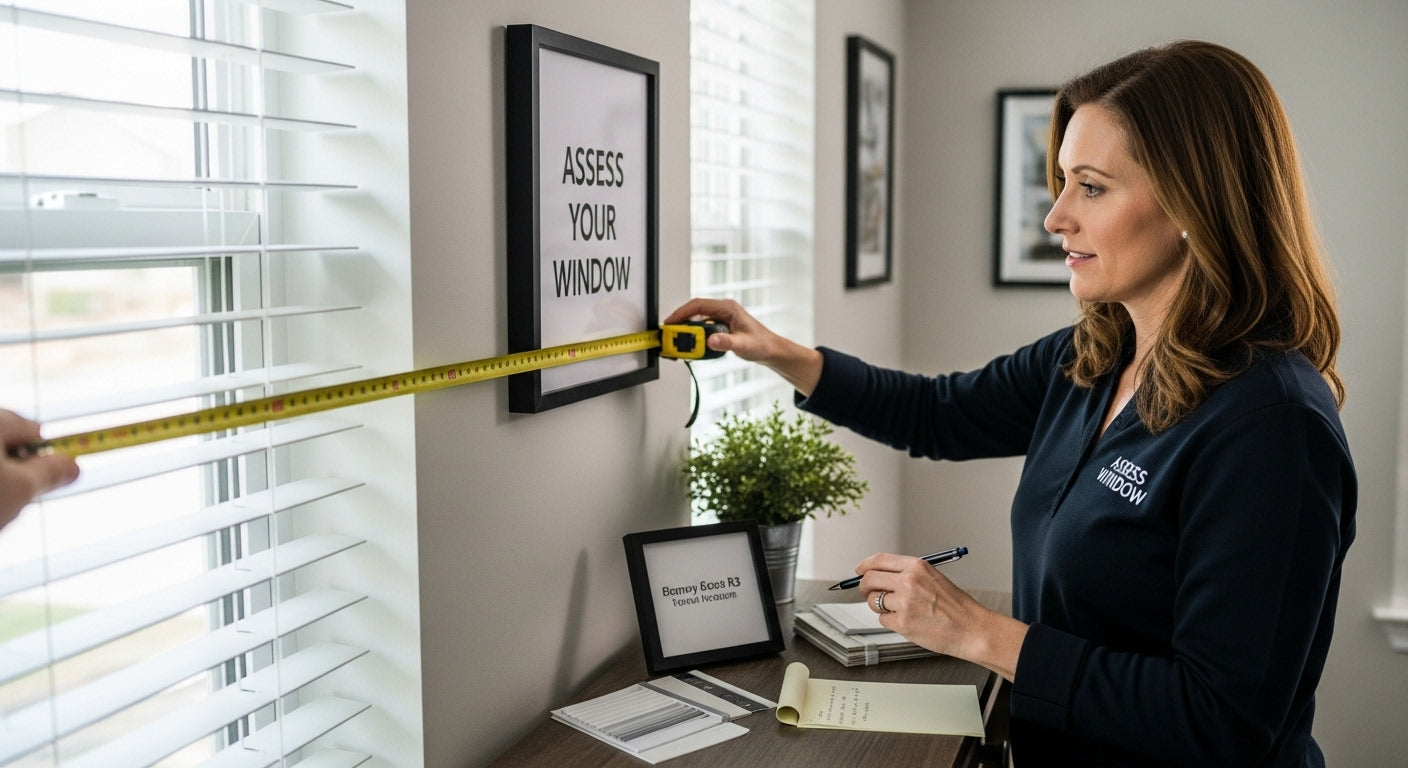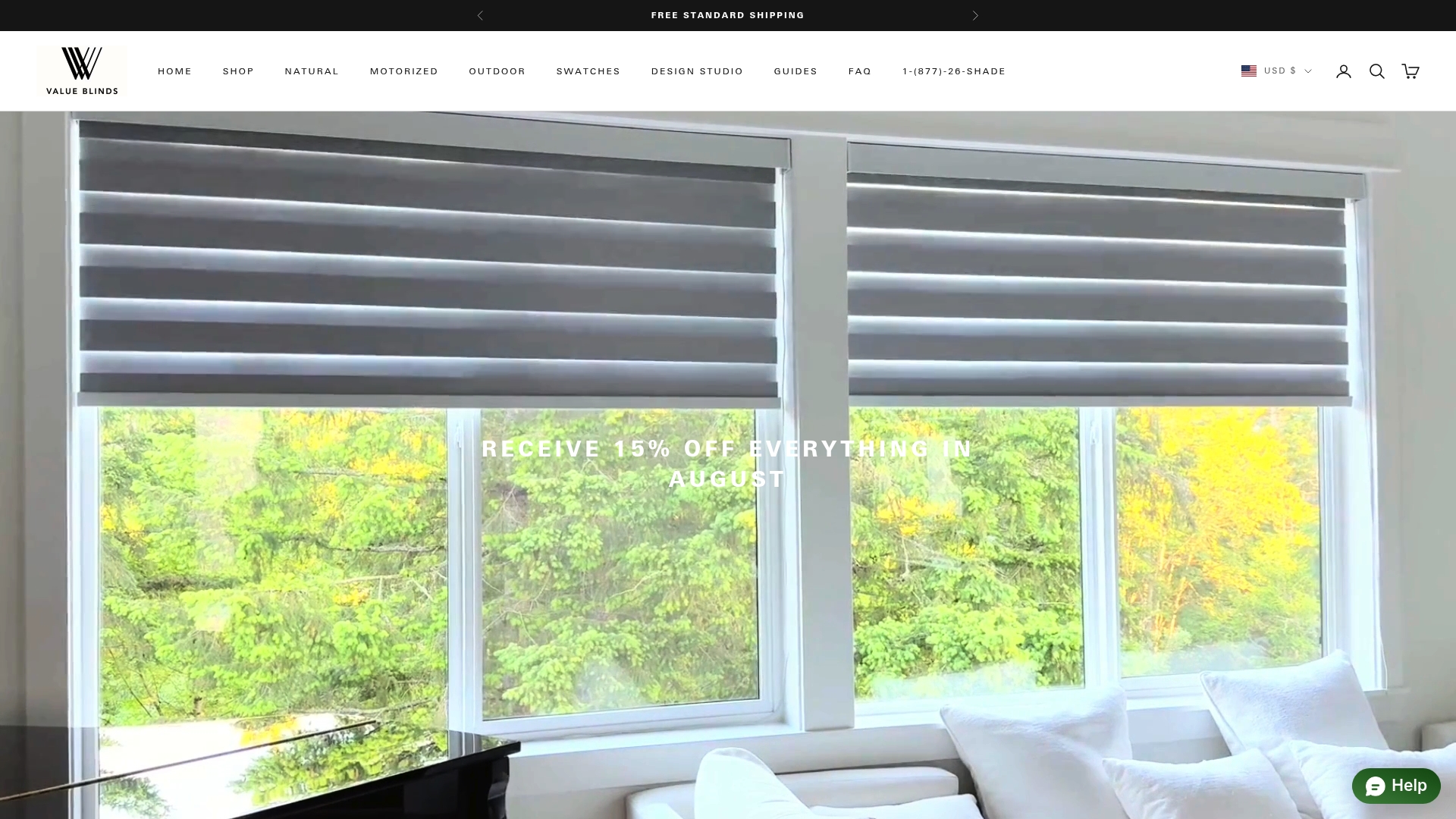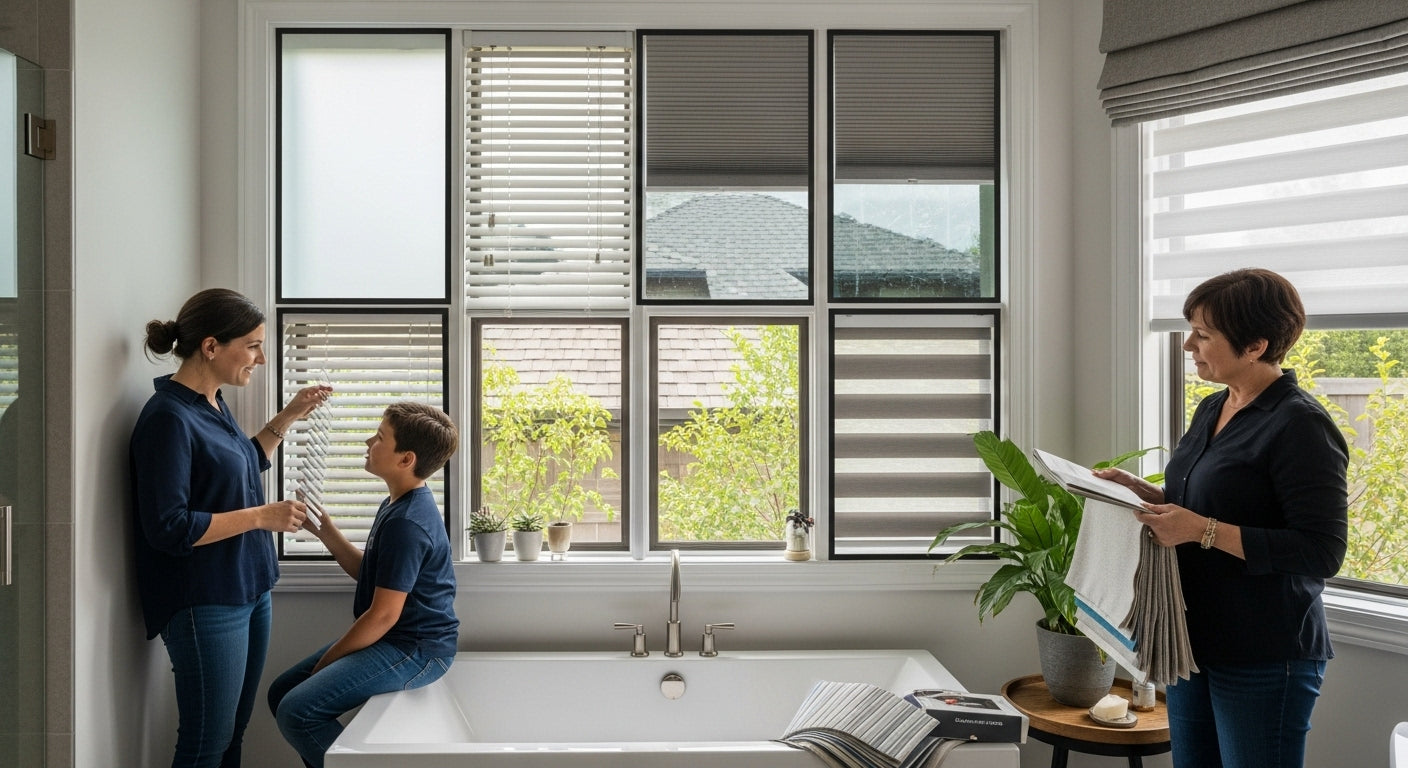
How to Choose Blinds: A Step-by-Step Guide for Your Home
Choosing blinds seems simple until you realize just how much they impact daily comfort. The right set does so much more than decorate a window and properly measured blinds can block up to 45 percent of unwanted heat and glare in summer. Most people focus on style or price and miss the details that make blinds work for their specific space. That small oversight can mean the difference between a room that feels perfectly tailored and one that never quite delivers what you need.
Table of Contents
- Assess Your Window Needs And Preferences
- Research Different Types Of Blinds Available
- Measure Your Windows For Accurate Sizing
- Select The Right Material And Color
- Install Your Chosen Blinds With Precision
- Test Functionality And Make Adjustments
Quick Summary
| Key Point | Explanation |
|---|---|
| 1. Assess individual window needs | Evaluate each window’s function, light, and privacy requirements for tailored blind selection. |
| 2. Choose blind type wisely | Different styles like Venetian, vertical, and roller blinds offer distinct advantages for design and functionality. |
| 3. Measure accurately for fitting | Precise measurements prevent gaps and ensure proper installation, enhancing performance and appearance. |
| 4. Select materials and colors carefully | The right choices impact aesthetics and function, balancing durability with design appeal for your space. |
| 5. Test functionality after installation | Ensure smooth operation and light control by testing blinds frequently and making necessary adjustments. |
Assess Your Window Needs and Preferences
Selecting the right blinds begins with a strategic assessment of your specific window requirements. Understanding your unique space means diving deep into practical considerations that will ultimately guide your window treatment selection. This foundational step ensures you choose blinds that not only look stunning but perform exactly as your home demands.
Start by examining each window individually. Consider the room’s primary function and how light, privacy, and temperature control play into your daily life. A bedroom might require blackout capabilities for optimal sleep, while a home office needs glare reduction for screen visibility. Living areas often benefit from treatments that allow soft natural light while maintaining privacy.
Carefully analyze your window’s orientation and exposure. South and west facing windows typically receive more direct sunlight, which means you’ll want blinds with superior heat blocking and UV protection. Learn more about understanding window treatments that can adapt to different environmental conditions. Windows facing busy streets or neighboring properties might prioritize privacy solutions with adjustable light filtering options.
Your lifestyle and aesthetic preferences are equally crucial in this selection process. Do you prefer minimalist designs or rich textural elements? Are you seeking cordless options for child and pet safety? Modern window treatments offer incredible versatility. Some homeowners want motorized blinds for hard to reach areas, while others prioritize energy efficiency or sound dampening qualities.
Take time to physically inspect your windows. Measure precise dimensions, note any architectural peculiarities like unusual shapes or multiple panes. Understanding these nuanced details prevents costly mistakes and ensures a perfect fit. Pay attention to window depth, frame style, and potential mounting challenges that could influence your blind selection.
Research Different Types of Blinds Available
Blinds represent far more than simple window coverings—they are functional design elements that transform interior spaces. Your journey to finding the perfect window treatment requires understanding the nuanced characteristics of various blind types, each offering unique aesthetic and practical advantages.
Venetian blinds emerge as a classic choice, featuring horizontal slats that can be tilted to control light and privacy with remarkable precision. Constructed from materials like aluminum, wood, or faux wood, these versatile window treatments suit almost any interior design scheme. Aluminum versions work brilliantly in modern spaces, while wooden Venetians add warmth and natural texture to traditional rooms.
Learn more about choosing the right blinds for your home as you explore different options. Vertical blinds present another compelling option, particularly excellent for larger windows or sliding glass doors. Their floor to ceiling design creates a sleek, contemporary appearance while providing exceptional light management. These blinds slide smoothly along a track, making them ideal for spaces requiring frequent access like patios or home offices.
Roller blinds represent a minimalist solution perfect for those seeking clean, streamlined window treatments. Fabricated from a single piece of fabric that rolls up or down, they offer simplicity and functionality. Some advanced roller blind designs incorporate light filtering or blackout technologies, allowing precise control over room illumination. Cellular or honeycomb blinds introduce an innovative approach, featuring unique cellular construction that traps air and provides superior insulation. Their distinctive design not only enhances energy efficiency but also adds a modern architectural element to your interior.
Consider your specific requirements as you research. Each blind type brings distinct advantages—some prioritize aesthetics, others focus on functionality. Take time to visualize how different blind styles will interact with your existing decor, natural light patterns, and practical needs. The perfect window treatment should seamlessly blend form and function, transforming your space while meeting your practical requirements.
Below is a comparison table summarizing the main types of blinds discussed in the article, highlighting their key features and suitable applications.
| Blind Type | Key Features | Best For | Material Options |
|---|---|---|---|
| Venetian | Horizontal slats, precise light & privacy control | Most interiors, versatile design | Aluminum, Wood, Faux Wood |
| Vertical | Floor-to-ceiling, slides on track | Large windows, sliding glass doors | Fabric, PVC, Aluminum |
| Roller | Single fabric panel, rolls up/down | Minimalist spaces, clean look | Fabric (Light or Blackout) |
| Cellular (Honeycomb) | Honeycomb structure, insulates windows | Energy efficiency, modern appearance | Fabric (Insulating) |
Measure Your Windows for Accurate Sizing
Precise measurements are the cornerstone of selecting perfectly fitted blinds that transform your windows from ordinary to exceptional. The wrong size can result in unsightly gaps, improper functionality, or blinds that simply do not work with your space. Your measuring approach will differ depending on whether you plan an inside mount or outside mount installation.
For inside mount installations, you will need a metal measuring tape and a steady hand. Measure the width at the top, middle, and bottom of the window opening, recording the narrowest measurement. This ensures your blinds will fit smoothly within the window frame. Depth is equally critical—most inside mount blinds require at least 2 inches of depth to install properly. Check out our complete guide on window measurement techniques to avoid common pitfalls that could compromise your blind installation.
Outside mount installations offer more flexibility, allowing you to create the illusion of larger windows or cover imperfections in window frames. When measuring for outside mount, you will want to add approximately 2 to 3 inches on each side of the window to ensure complete coverage. Precision is key—measure from the points where you intend to install mounting brackets, typically just outside the window frame. This approach provides maximum light blockage and creates a more polished, intentional look.
Special window configurations require extra attention. Bay windows, arched windows, or windows with unique architectural features demand careful consideration. Take multiple measurements and consider consulting a professional if your windows deviate from standard rectangular shapes. Some homeowners opt to have a professional measure to guarantee absolute accuracy, especially when investing in custom or high-end blind treatments.
Before finalizing your measurements, double-check your work. Measure twice, order once—this simple rule can save you significant time and frustration. Verify your measurements in different lighting conditions and from multiple angles. A small error can mean the difference between blinds that look professionally installed and those that appear awkward or ill-fitting.

Select the Right Material and Color
Choosing the right material and color for your blinds transforms them from mere window coverings into strategic design elements that enhance your entire living space. This critical decision impacts not just aesthetics but also functionality, durability, and the overall atmosphere of your rooms.
Wooden blinds offer timeless elegance and natural warmth, ideal for spaces seeking a classic or rustic ambiance. Hardwood options like oak or maple provide exceptional durability and rich texture, while faux wood alternatives deliver similar visual appeal with enhanced moisture resistance—perfect for kitchens and bathrooms. Aluminum blinds present a sleek, contemporary solution, particularly suited to modern interiors or spaces requiring maximum light control and easy maintenance.
Explore custom window treatment options that can truly personalize your space. Color selection goes far beyond simple aesthetic preference. Light colors reflect sunlight and create an illusion of spaciousness, making smaller rooms feel more open and airy. Darker hues absorb light and can add dramatic depth, making large rooms feel more intimate and sophisticated. According to energy efficiency research, lighter colored blinds can significantly reduce heat absorption, contributing to better home temperature regulation.
Consider the existing color palette of your room when making your selection. Neutral tones like whites, creams, and grays provide maximum versatility, seamlessly blending with changing decor. Bold colors can serve as statement pieces, drawing the eye and creating visual interest. Textured materials add another layer of complexity—woven fabrics introduce softness, while metallic finishes bring contemporary edge.
Make your final selection by obtaining fabric swatches or color samples. Natural lighting can dramatically alter how a color appears, so test your choices in the actual room where the blinds will be installed. Hold samples against walls, furniture, and near windows to ensure perfect harmony. Remember that your blinds are an investment—choose materials and colors that not only look beautiful today but will continue to complement your space for years to come.
Install Your Chosen Blinds with Precision
Blind installation represents the final transformation of your carefully selected window treatments from potential to perfection. This critical stage demands patience, precision, and a methodical approach to ensure your blinds not only look stunning but function flawlessly for years to come.
Begin by gathering essential tools: a reliable power drill, level, pencil, measuring tape, mounting brackets, screws, and safety glasses. Preparation is paramount. Clear the workspace around your window, removing any obstacles that might interfere with installation. If you are mounting inside the window frame, verify that your previously taken measurements align exactly with the blind’s specifications. Learn more about precise blind installation techniques to avoid common rookie mistakes.
Mounting brackets require extraordinary attention. According to professional window treatment guidelines, precise horizontal alignment prevents uneven operation and potential damage. Use your level meticulously, marking bracket positions with a pencil before drilling. For inside mounts, brackets should sit squarely within the window frame, typically about 2 inches from each side. Outside mounts demand slightly different placement—typically just above and beyond the window frame to create an expansive, elegant appearance.
Once brackets are securely installed, carefully attach the blind, ensuring smooth movement and proper alignment. Test the blind’s mechanism multiple times, checking for smooth raising, lowering, and tilting. Pay special attention to cord mechanisms or motorized controls, verifying they operate without resistance.
 Minor adjustments might be necessary to achieve perfect functionality.
Minor adjustments might be necessary to achieve perfect functionality.
A successful installation reveals itself through several key indicators. Your blinds should hang perfectly straight, move effortlessly with minimal friction, and sit flush against the window frame. Listen for any unusual sounds during operation—silence indicates proper installation. If you encounter persistent issues or feel uncertain about any step, do not hesitate to consult a professional. Remember, precision during installation guarantees the longevity and performance of your carefully chosen window treatments.
The table below outlines the common tools and materials needed for successful blind installation, along with their purpose.
| Tool/Material | Purpose | Notes |
|---|---|---|
| Power Drill | Installing screws for mounting brackets | Essential for both mount types |
| Level | Ensuring brackets are accurately aligned | Prevents uneven operation |
| Measuring Tape | Confirming measurements for placement | Critical for precision |
| Pencil | Marking bracket positions | Use before drilling |
| Mounting Brackets | Holding blinds securely in place | Provided with blinds |
| Screws | Securing brackets to wall/frame | Match to wall material |
| Safety Glasses | Protecting eyes while drilling | Recommended for safety |
Test Functionality and Make Adjustments
The journey of selecting and installing blinds culminates in this critical phase of comprehensive testing and fine-tuning. Your meticulous efforts will now be validated through a systematic evaluation of your window treatments’ performance, ensuring they meet both aesthetic and functional expectations.
Operational testing requires a comprehensive approach. Raise and lower your blinds multiple times, observing the smoothness of movement and listening for any unusual sounds. Consistent resistance indicates potential misalignment or tension issues that need immediate attention. Learn more about precise blind functionality checks to guarantee optimal performance. Pay special attention to cordless or motorized mechanisms, verifying they respond promptly and evenly across the entire blind surface.
Light control represents another critical evaluation parameter. Open and close your blinds at different times of day, assessing how effectively they block or filter sunlight. Uneven gaps or light leakage suggest minor adjustments are necessary. For inside-mounted blinds, check that they sit flush within the window frame, creating a clean, professional appearance. Outside-mounted blinds should extend slightly beyond the window’s perimeter, providing maximum coverage and a polished look.
Adjustment techniques vary depending on your blind type. Cord-operated blinds might require tension spring rebalancing, while motorized versions could need recalibration of their internal mechanisms. Subtle modifications can dramatically improve performance. Examine mounting brackets to ensure they remain securely fastened, as slight shifts can cause operational inconsistencies. If persistent issues arise, do not hesitate to consult the manufacturer’s troubleshooting guide or contact professional installation support.
Successful functionality testing reveals itself through seamless operation, uniform light control, and aesthetic perfection. Your blinds should move effortlessly, maintain their position when stopped, and complement your interior design. Repeat these tests periodically to catch and address any emerging issues early, preserving the longevity and performance of your carefully selected window treatments.
Ready to Find the Perfect Blinds Without the Guesswork?
Choosing blinds for your home can feel overwhelming. Making sense of different materials, colors, sizing, and installation steps leaves many homeowners uncertain and worried about making a costly mistake. If measuring windows or picking the right features like blackout or cordless options feels risky, you are not alone. Your home deserves precision, comfort, and a look you actually love—without the frustration.
Explore Our Best Sellers to see the most trusted blinds and shades chosen by other homeowners who faced the same challenges you are facing.

Bring your vision to reality with free swatches, step-by-step guides, and designer support available at Value Blinds. Design custom window treatments with confidence, then order with flexible shipping and expert help whenever you need it. Do not wait—get started now for worry-free measuring and installation, and discover how easy it is to achieve the transformation your space deserves.
Frequently Asked Questions
What factors should I consider when assessing my window needs for blinds?
Consider the primary function of the room, the amount of light and privacy required, and the window’s orientation. Identify whether you need blackout capabilities for bedrooms, glare reduction for home offices, or light-filtering options for living areas.
How do I properly measure my windows for blinds installation?
For inside mount installations, measure the width at the top, middle, and bottom of the window opening and take the narrowest measurement. For outside mounts, add 2 to 3 inches on each side for complete coverage. Always double-check your measurements for accuracy.
What are the different types of blinds available, and how do they differ?
Venetian blinds feature horizontal slats, ideal for precise light control. Vertical blinds are suitable for larger windows or sliding doors, while roller blinds offer a minimalist option. Cellular blinds provide insulation with their unique design, each type having its own aesthetic and functional benefits.
How can I ensure a proper installation of my chosen blinds?
Carefully follow the manufacturer’s instructions, gather the necessary tools, and ensure brackets are installed level and securely. Test the functionality of your blinds after installation to confirm they operate smoothly, making adjustments if necessary.







